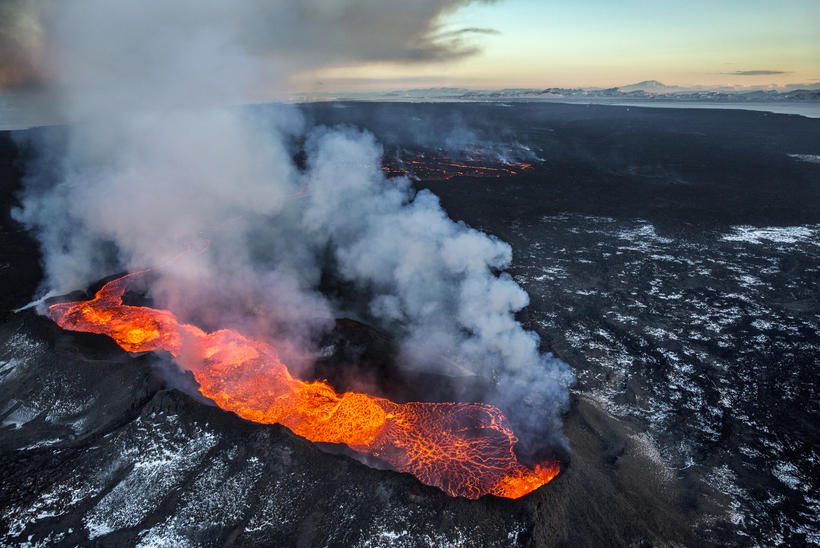Holuhraun could have been much worse
The impact of the recent Holuhraun volcanic eruption could have been much worse, if the timing and exact location had been different, says a leading scientist.
“We were lucky with the Holuhraun eruption as regards both timing and location,” says Sigurður Reynir Gíslason of the University of Iceland.
Last winter was dark, dry and windy
Sulphur dioxide released by volcanic eruptions is most readily converted into sulphuric acid – which is harmful to human health – in bright, wet and windless conditions.
Fortunately for Iceland, the Holuhraun eruption began as the summer of 2014 was coming to end and was under way during the darkest months of the year. Last winter was also dry (sulphuric acid formation is up to four times quicker in a damp environment) with strong winds, which dispersed volcanic gases quickly away from Iceland.
The devastating Skaftáreldar eruption
This is the exact opposite of what happened during the infamous Skaftáreldar eruption, which began on 8 June 1783.
The 24-hour daylight and light winds of that summer provided ideal conditions for the formation of a poisonous volcanic smog. The environmental impacts of the 1783 Skaftáreldar eruption killed 20% of the Icelandic population and affected thousands in Europe, particular in the UK, France and the Netherlands.
Holuhraun’s location was also a blessing, explains Gíslason. It lies in a dry area, sheltered from rain by the Vatnajökull glacier. The area also produces a great deal of dust, which acts to neutralise any sulphuric acid in the aire.









/frimg/1/57/56/1575636.jpg)